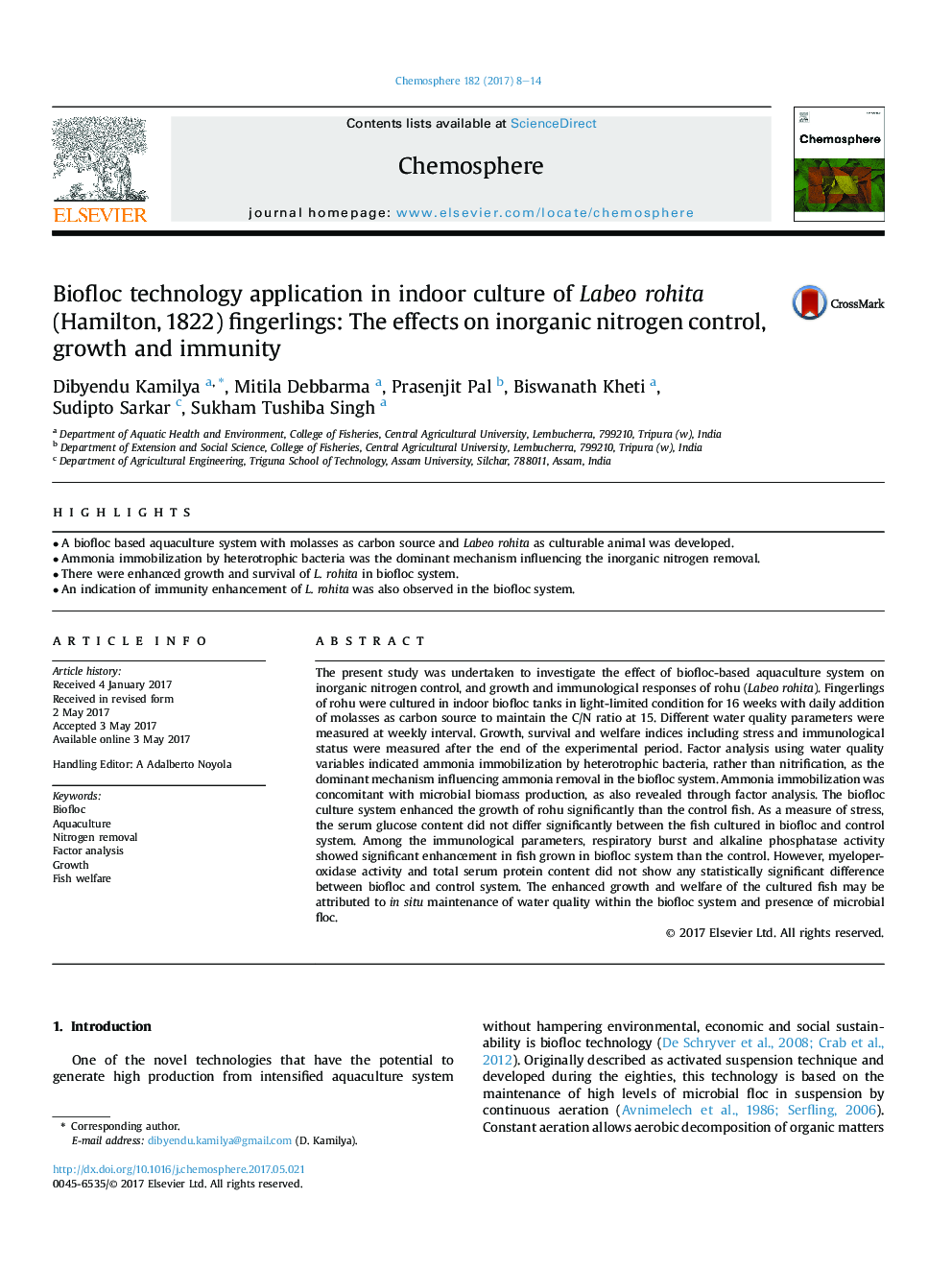| Article ID | Journal | Published Year | Pages | File Type |
|---|---|---|---|---|
| 5746928 | Chemosphere | 2017 | 7 Pages |
â¢A biofloc based aquaculture system with molasses as carbon source and Labeo rohita as culturable animal was developed.â¢Ammonia immobilization by heterotrophic bacteria was the dominant mechanism influencing the inorganic nitrogen removal.â¢There were enhanced growth and survival of L. rohita in biofloc system.â¢An indication of immunity enhancement of L. rohita was also observed in the biofloc system.
The present study was undertaken to investigate the effect of biofloc-based aquaculture system on inorganic nitrogen control, and growth and immunological responses of rohu (Labeo rohita). Fingerlings of rohu were cultured in indoor biofloc tanks in light-limited condition for 16 weeks with daily addition of molasses as carbon source to maintain the C/N ratio at 15. Different water quality parameters were measured at weekly interval. Growth, survival and welfare indices including stress and immunological status were measured after the end of the experimental period. Factor analysis using water quality variables indicated ammonia immobilization by heterotrophic bacteria, rather than nitrification, as the dominant mechanism influencing ammonia removal in the biofloc system. Ammonia immobilization was concomitant with microbial biomass production, as also revealed through factor analysis. The biofloc culture system enhanced the growth of rohu significantly than the control fish. As a measure of stress, the serum glucose content did not differ significantly between the fish cultured in biofloc and control system. Among the immunological parameters, respiratory burst and alkaline phosphatase activity showed significant enhancement in fish grown in biofloc system than the control. However, myeloperoxidase activity and total serum protein content did not show any statistically significant difference between biofloc and control system. The enhanced growth and welfare of the cultured fish may be attributed to in situ maintenance of water quality within the biofloc system and presence of microbial floc.
